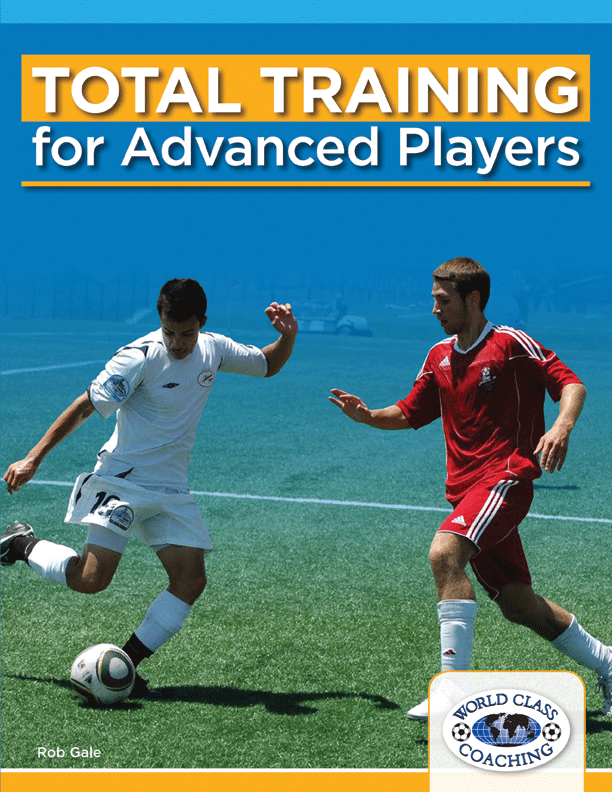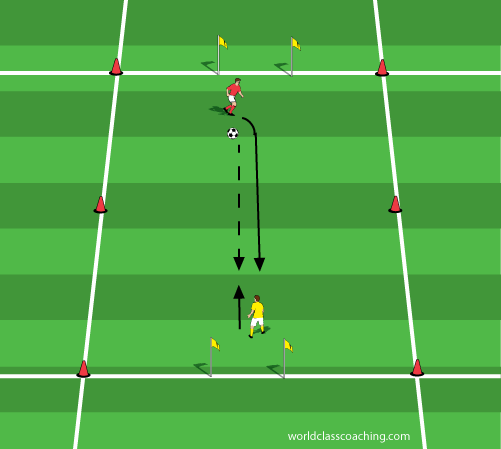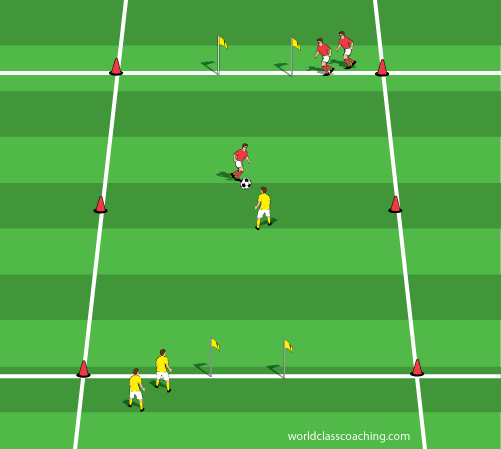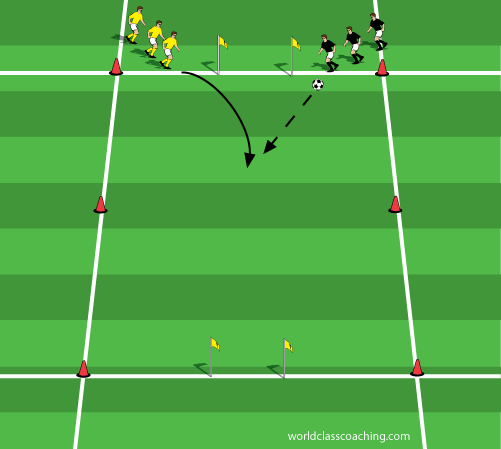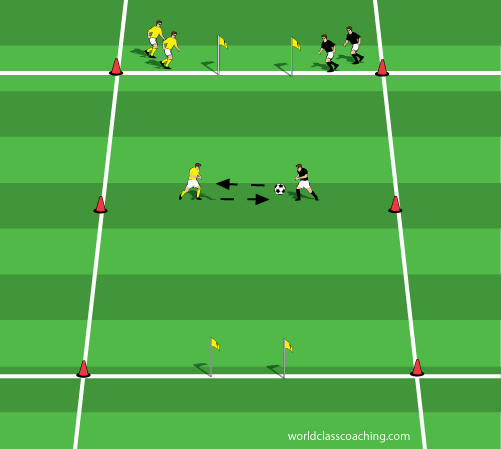This is an excerpt from one of our most popular recent books, 'Total Training for Advanced Players'. This section focuses on One v One Training.
At the highest levels of the game essentially it is just one versus one all over the field. If your team can win the majority of individual match ups it is likely you will be on the winning side. To become better at one versus one situation there are no great secrets –it must be practiced over and over again and in realistic situations.
The best players are those that are able to perform the basic fundamental skills of the game – at speed- under pressure and on demand. There are players who can do tricks with the ball and 10,000 step over’s on their own but never get past an opponent. Place the players in 1v1 situations and then look at their individual faults and try to correct them- this can be done both defensively and offensively. If you as the coach can affect the player and improve them one on one then this will go a long way in developing that individuals potential.
A large part of one versus one training can also be done on the mentality of the player. Soccer is a game of confidence and players who have it as well as technical ability will be successful, they have the confidence to try things and make mistakes but to try again, they are the players who want the ball all the time. Defending and Attacking are both mentalities and never more so than in 1v1 . Players should have a burning desire to not let their opponent beat them. If they are attackers they should always want to go at their opponent and get past them to create goal scoring chances or score themselves. If they are defenders they should equally have a burning desire to not be beat and to stop their opponent from scoring or creating chances for others.
As with most things in this book if you create an environment that challenges players you will breed competitors and you as the coach can start to instill the attitude and mentality of a high level player into your group.
One v One Training
Setup
10 x 20 yard area as shown in diagram. At each end place a central goal 3-4 yards wide. Work in pairs.
Explanation
The defender (in red) plays driven ball into attacker’s square (yellow) and then moves quickly to close down opponent.
The attacker has to get the ball into the defender’s square before they can score in the goal in opponents half and they are not allowed to bend ball around opponent- must take them on.
The defender should look to close down the attacker as fast as possible preventing them from getting to goal quickly
Progression: Attacker has to dribble ball through goal to score . 2nd progression - Defender can counter attack to opposite goal
Setup
10 x 20 yard area as shown in diagram. At each end place a central goal 3-4 yards wide. Work in groups of about 6 for 1/3 work rest ratio
Explanation
Similar to above except player start in middle and have to perform skill exercises before coach whistles for game to begin. Whoever has ball as whistle goes becomes attacker and tries to score on opponent’s goal as before.
Setup
10 x 15 yard area as shown in diagram. At each end place a central goal 3-4 yards wide. Groups of 6-8
Explanation
The attackers are the line of players with the ball – the defenders line up the other side of one end goal.
On coaches whistle the attackers dribble out and attack goal at far end- defenders try to stop them from scoring and if they win the ball can counter attack the goal at the end where the players are.
Game ends if ball goes out of grid, one player scores or coach calls it due to elapsed time being too great.
Progression
Instead of coaches whistle attackers first touch starts the drill and defenders have to react accordingly.
Add Goalkeepers later in the drill for more realism.
Setup
As above except starting players start in front of one goal and perform skill task to begin
Explanation
Similar to above except player start in middle and have to perform skill exercises before coach whistles for game to begin. Whoever has ball as whistle goes becomes attacker and tries to score on opponent’s goal as before.
Potential technique exercises: 1 touch passing back and forth – inside of foot then laces. Heading the ball between one another. Juggling the ball between one another. Players must dribble through the goal to score.
Progression
Players can serve ball to opponent to volley to start game- Players could receive the volley back –control and then start the game etc. Challenge your group with techniques at start. Allow for counter attacks to nearest goal.

